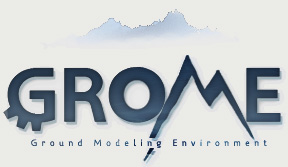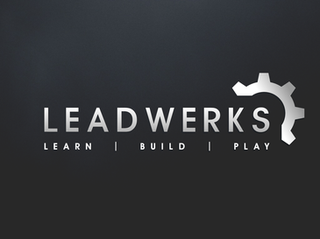id Tech 1, also known as the Doom engine, is the game engine used in the id Software video games Doom and Doom II: Hell on Earth. It is also used in Heretic, Hexen: Beyond Heretic, Strife: Quest for the Sigil, Hacx: Twitch 'n Kill, Freedoom, and other games produced by licensees. It was created by John Carmack, with auxiliary functions written by Mike Abrash, John Romero, Dave Taylor, and Paul Radek. Originally developed on NeXT computers, it was ported to MS-DOS and compatible operating systems for Doom's initial release and was later ported to several game consoles and operating systems.
Irrlicht is an open-source game engine written in C++. It is cross-platform, officially running on Windows, macOS, Linux and Windows CE and due to its open nature ports to other systems are available, including FreeBSD, Xbox, PlayStation Portable, Symbian, iPhone, AmigaOS 4, Sailfish OS via a QT/Qml wrapper, and Google Native Client.
Source is a 3D game engine developed by Valve. It debuted as the successor to GoldSrc in 2004 with the releases of Half-Life: Source, Counter-Strike: Source, and Half-Life 2. It is most well-known for its usage by Valve, but the engine has been used both by small teams and individuals to create modifications of Valve games, and other studios creating distinct games, notably Troika Games' title Vampire: The Masquerade – Bloodlines. Valve continued to create incremental updates to the Source engine after its 2004 release, most of which coincided with games created by Valve. In the late 2010s, Valve created the Source 2 engine to replace Source, with it publicly debuting alongside Half-Life: Alyx. The Source engine is most well-known for its advancements in physics, AI, and graphics.
A first-person shooter engine is a video game engine specialized for simulating 3D environments for use in a first-person shooter video game. First-person refers to the view where the players see the world from the eyes of their characters. Shooter refers to games which revolve primarily around wielding firearms and killing other entities in the game world, either non-player characters or other players.

The Quake engine is the game engine developed by id Software to power their 1996 video game Quake. It featured true 3D real-time rendering. Since 2012, it has been licensed under the terms of GNU General Public License v2.0 or later.

id Tech 3, popularly known as the Quake III Arena engine, is a game engine developed by id Software for their video game Quake III Arena. It has been adopted by numerous games. During its time, it competed with the Unreal Engine; both engines were widely licensed.

3D GameStudio or 3DGS is a pan 3D computer game development system which allows the users to create 3D games and other virtual reality applications, and publish them royalty-free. It includes a model/terrain editor, a level editor, a script editor/debugger and comes with a big collection of textures, models and artwork, as well as a game template system that allows the creation of basic shooter games or RPGs without programming. For complex games or other applications, either the integrated programming language named Lite-C or an external development language such as Visual C++ or Borland Delphi can be used.

The Blender Game Engine was a free and open-source 3D production suite used for making real-time interactive content. It was previously embedded within Blender, but support for it was dropped in 2019, with the release of Blender 2.8. The game engine was written from scratch in C++ as a mostly independent component, and includes support for features such as Python scripting and OpenAL 3D sound.
SpeedTree is a group of vegetation programming and modeling software products developed and sold by Interactive Data Visualization, Inc. (IDV) that generates virtual foliage for animations, architecture and in real time for video games and demanding real time simulations.

AutoQ3D Community is a cross-platform CAD software, suited for 3D modeling and texturing. The main objective of this software development is to take away the hassle and complexity for sketching and drawing in 3D. AutoQ3D Community is not a professional CAD program and it is targeted at beginners who want to make rapid 3D designs. It offers plenty of features but is relatively simple to learn and use.

id Tech is a series of separate game engines designed and developed by id Software. Prior to the presentation of the id Tech 5-based game Rage in 2011, the engines lacked official designation and as such were simply referred to as the Doom and Quake engines, from the name of the main game series the engines had been developed for. "id Tech" has been released as free software under the GNU General Public License. id Tech versions 0 to 3 were released under GPL-2.0-or-later. id Tech versions 3.5 to 4.5 were released under GPL-3.0-or-later. id Tech 5 to 7 are proprietary, with id Tech 7 currently being the latest utilized engine.

Grome is an environmental modeling package developed by Quad Software dedicated for procedural and manual generation of large virtual outdoor worlds suitable for games and other 3D real-time simulation applications.
iClone is a real-time 3D animation and rendering software program. Real-time playback is enabled by using a 3D videogame engine for instant on-screen rendering.
Based on Id Software's open stance towards game modifications, their Quake series became a popular subject for player mods beginning with Quake in 1996. Spurred by user-created hacked content on their previous games and the company's desire to encourage the hacker ethic, Id included dedicated modification tools into Quake, including the QuakeC programming language and a level editor. As a game that popularized online first-person shooter multiplayer, early games were team- and strategy-based and led to prominent mods like Team Fortress, whose developers were later hired by Valve to create a dedicated version for the company. Id's openness and modding tools led to a "Quake movie" community, which altered gameplay data to add camera angles in post-production, a practice that became known as machinima.

Art of Illusion is a free software, and open source software package for making 3D graphics.

Leadwerks is a cross-platform game engine developed by Leadwerks Software that focuses on ease of use and learning. The software supports Windows and Linux, with OS X support in development. Leadwerks is currently on its fourth major version and is sold through the Steam digital distribution platform.








